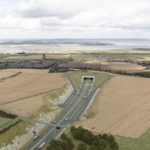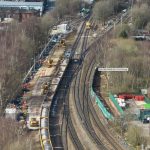News - Construction News
Verifying Queen Elizabeth II Bridge
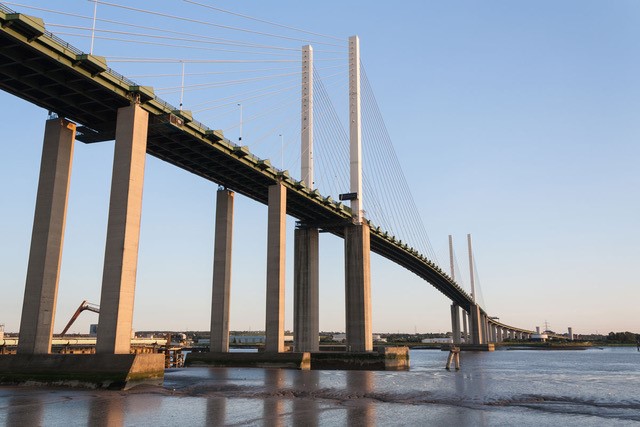
When it was first opened in October 1991, the QEII Bridge over the River Thames was Europe’s largest cable-supported bridge. The 2.8km long and 130m high bridge is managed and operated by Connect Plus Services (CPS) on behalf of Connect Plus, as part of a 30-year contract awarded by Highways England.
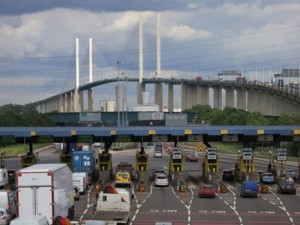
Since its contract began in 2009, CPS had been receiving anecdotal reports highlighting incidences of vibration occurring on the pylon and stays in certain wind conditions. Due to the anecdotal and subjective nature of the information sources, CPS needed to investigate to provide a clearer understanding of the fatigue demand in critical areas of the structure. The company embarked upon a structural monitoring programme with the primary goal of ensuring that the QEII Bridge will remain in good structural condition, to minimise future maintenance costs.
In 2012 structural engineering specialists COWI performed an initial desk study and temporary monitoring exercise. This identified a potential susceptibility to vortex-induced wind excitation of the bridge pylons, which in turn seemed to cause excitation of the stays. Dry- and rain-wind galloping of the stays was also identified as a risk, due to low measured intrinsic damping.
For these mechanisms of wind-induced excitation, the magnitude of the response is known to be sensitive to the specific environmental conditions, for example the speed, direction and turbulence of the wind and the intensity of rainfall. To gain an accurate understanding of the fatigue demand on the structure, it is necessary to understand how often significant response events occur and quantify their severity. By correlating structural response against measured climatic conditions, insight is gained into the specific conditions and mechanisms that are causing the vibrations.
CPS invited Applied Industrial Systems to work together with COWI to devise a scheme that included tendering for the sensors’ design and supply as part of a permanent structural health monitoring programme (SHMP). The SHMP needed to measure and simultaneously analyse five aspects of bridge behaviour, by collecting data continuously at very high speeds. Variables to be monitored included:
- Stay responses, in order to derive deflection amplitudes and modes correlated to wind intensity, turbulence and direction, also in conjunction with rain.
- Stay response as a result of pylon vibrations and to observe patterns of stored energy transfer between pylons and to understand the causal mechanism (and incidence).
- Synchronised response to the impact of corresponding wind, turbulence, rain and thermal measurements.
- Deck response, which is measured because this may have a contributory role in the transfer or storage of energy.
- Wind is measured at both deck and pylon-top levels for speed, direction and turbulence.
“The best way to remove speculation and subjectivity about demand on the bridge is to instrument and accurately measure what is happening and how the bridge responds during different combinations of weather conditions.” says Neil McFadyen, Technical Director at COWI, who was responsible for the performance design.
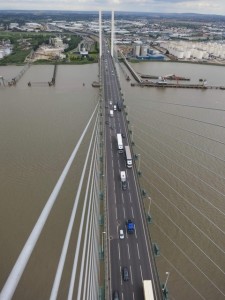
Currently in commissioning phase, the purpose of the new structural health monitoring system is to note whenever there is a response to wind by the pylons or stays, record the response and then classify it in terms of wind direction and speed.
“Once we have captured a series of response events over an extended period, we will be able to identify two things; firstly the incipient wind conditions as events take place and secondly, how often they happen. Since we also know the historical meteorological patterns for the Dartford area, we can then make reliable probabilistic predictions about the amplitude of vibrations on the pylons and stays, plus their future frequencies of occurrence. This kind of predictive power can save significant amounts of actual value when one considers the costs of stay replacement or strengthening.” says Neil McFadyen.
Ordinarily this would result in vast amounts of data, which due to volumes, could not all feasibly be stored or reviewed. The structural health monitoring system designed by COWI and developed by AIS has been designed to counter these issues, by constantly examining whether data being collected is of interest.
“During the 200Hz acquisition phase, when data of interest is captured, this activates a trigger schedule for the relevant information to be stored for a set period of time, which enables wind build-up impacts to be monitored. Since this is taking place continuously, it’s possible to examine historical information and compare impact during different weather conditions,” says Simon Burras, Managing Director at AIS.
The system has another trick up its sleeve. The UK predominantly receives wind from the southwest, so COWI anticipated a faster accumulation of event packets where the wind is coming from that direction. However, using historical wind data from the Crossing instrumentation, it is possible to exclude data segments from the statistical processing data set in proportion to this historical incidence and thereby adjust the data set to accumulate an unbiased account of the effects of wind from nearly all directions and velocities. As a result, it then becomes much easier to state with confidence when the experiment is sufficiently complete and avoid unnecessary engineering analysis.
In addition, the system allows data to be synchronised, to simultaneously observe vibrations in different parts of the bridge structure – for example, monitoring aeolian vibration of the pylons forcing vibrations in the stays. The required synchronisation was achieved by using distributed Beckhoff EtherCAT I/O over fibre optic cables.
With Connect Plus making the investment in a new structural health monitoring system, CPS aims to be in a position to accurately forecast likely longer-term maintenance and operational costs in the shortest possible timeframe. Once the data capture phase has been running for a few years, CPS will be able to demonstrate with a high degree of confidence, whether the bridge will be compromised by wind demand. More significantly, if it is, CPS will have the ability to take ameliorative action whilst plenty of residual fatigue life remains.
“Ultimately, all bridges are effectively prototypes and although theoretical modelling allows us to predict impacts in the future, bridge engineers inevitably lack the advantages of trial and error afforded to other engineering disciplines. Verification and condition monitoring are essential aspects of maintenance and ensure that any service disruption, plus the cost of managing inevitable structural wear and tear, can be kept to an absolute minimum,” says Simon Burras.
If you would like to read more articles like this then please click here.
Related Articles
More News
- UK Introduces New Trade Measures to Support Steel Sector
11 Jul 25
Steel producers across the UK will benefit from stronger trade measures from 1 July.
- Clean energy future to be ‘built in Britain’
10 Jul 25
The Clean Energy Industries Sector Plan comes into force to ‘build it in Britain’.
- Thousands more to get the tools they need to start construction careers
9 Jul 25
Thousands of people are set to benefit from on-the-job training and career opportunities in the
